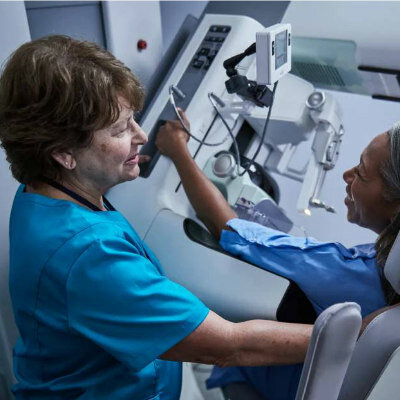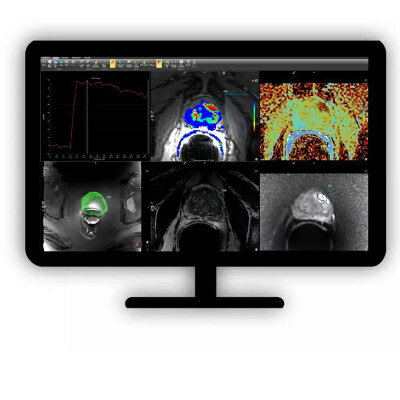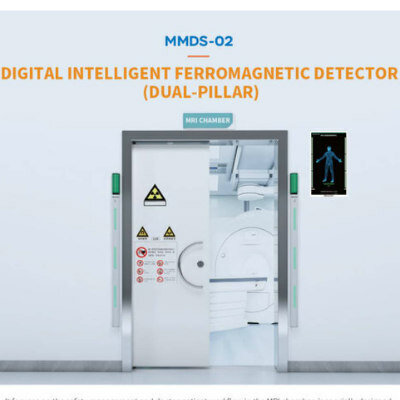Rising Use of Breast MRI Scans in the United States
By MedImaging International staff writers
Posted on 26 Nov 2013
The overall use of breast magnetic resonance imaging (MRI) has risen, with the technology most typically used for diagnostic assessments and screenings. Posted on 26 Nov 2013
The study’s findings were published online November 18, 2013, in JAMA Internal Medicine, a JAMA Network publication. Even though breast MRI is being used increasingly, its sensitivity leads to higher false-positive rates, and it is more costly. Guidelines from the American Cancer Society (ACS; Atlanta, GA, USA) indicate that breast MRI should be used to screen asymptomatic women at high risk for breast cancer if they are known carriers of the BRCA gene mutation; first-degree relatives of a known BRCA gene mutation carrier who are themselves untested; or a women with more than a 20% lifetime risk of breast cancer, according to the authors of the study.
Karen J. Wernli, PhD, from the Group Health Research Institute (Seattle, WA, USA) and colleagues examined the patterns of breast MRI scanning in US community practice from 2005 through 2009, with data collected from five national Breast Cancer Surveillance Consortium registries.
Study findings show that through 2005–2009, the overall rate of breast MRI nearly tripled from 4.2–11.5 scans per 1,000 women. The procedure was most typically used for diagnostic evaluation (40.3%), followed by screening (31.7%). Women who underwent screening breast MRI were more likely to be younger than 50 years old, white, nulliparous, have a personal history of breast cancer, a family history of breast cancer, and very dense breast tissue.
Study findings also indicate that the percentage of women screened with breast MRI at high lifetime risk for breast cancer increased from 9% in 2005 to 29% in 2009. The researchers also note that during the study period, the most common use of breast MRI was for diagnostic evaluation of a non-MRI finding. “Our findings suggest that there have been improvements in appropriate use of breast MRI, with a smaller proportion of examinations performed for further evaluation of abnormal mammogram results and symptomatic patients, and more breast MRI performed for screening of women at high risk,” the authors stated.
The use of breast MRI increased in the decade after 2001 before ultimately stabilizing, particularly for screening and monitoring of women with a family or personal history of breast cancer, according to a study by Natasha K. Stout, PhD, from the Harvard Medical School (Boston, MA, USA) and the Harvard Pilgrim Health Care Institute (Boston, MA, USA) and colleagues.
Although breast MRI is more sensitive than mammography in detecting breast cancer, cost and little evidence regarding the mortality benefits have limited recommendations for its use, according to the investigators. Between 2000 and 2001, researchers studied 10,518 women ages 20 and older who were enrolled in a health plan for at least one year and had at least one breast MRI at a multispecialty group medical practice in New England. Breast MRI counts and breast cancer risk status, as well as the reason for testing (screening, diagnostic assessment, staging, or treatment, or surveillance) were obtained.
According to study results, breast MRI increased from 2000 (6.5 examinations per 10,000 women) to 2009 (130.7 exams per 10,000 women), with the greatest rise in use for screening and surveillance. By 2011, use declined then stabilized at 104.8 exams per 10,000 women. Screening and surveillance accounted for 57.6% of MRI use by 2011. Of the women, 30.1% had a claims-document personal history, 51.7% a family history of breast cancer, and 3.5% of women had a documented genetic mutation.
Researchers noted that in a subset of women with electronic medical records who received screening or surveillance MRI scans only 21% had evidence of meeting American Cancer Society criteria for breast MRI. Only 48.4% of women with documented genetic mutations received breast MRI screening. “Understanding who is receiving breast MRI and the downstream consequences of this use should be a high research priority to ensure that the limited health care funds available are used to wisely maximize population health,” the authors concluded.
In a related commentary in the same issue of the journal, E. Shelley Hwang, MD, MPH, from the Duke University Medical Center (Durham, NC, USA) and Isabelle Bedrosian, MD, of the MD Anderson Cancer Center (Houston, TX, USA), reported: “In an era of ever-increasing focus on cost containment in health care, the value of MRI is clearly an issue of concern. What is striking in both studies by Wernli et al. and Stout et al. was that breast MRI was both overused in women not meeting guideline criteria and underused in those who could derive greatest benefit. As a medical community, we bear a collective responsibility to ensure that breast MRI provides sufficient clinical benefit to warrant the additional biopsies, increased patient anxiety, and cost that accrue with its use.”
Related Links:
Group Health Research Institute
Duke University Medical Center
Harvard Medical School













